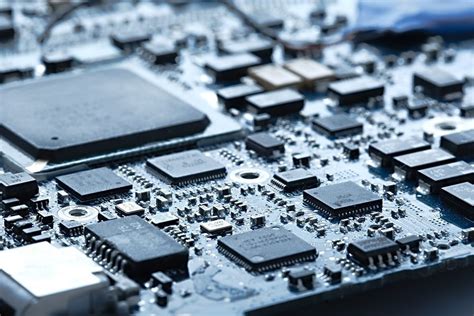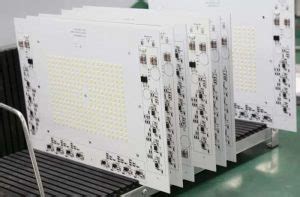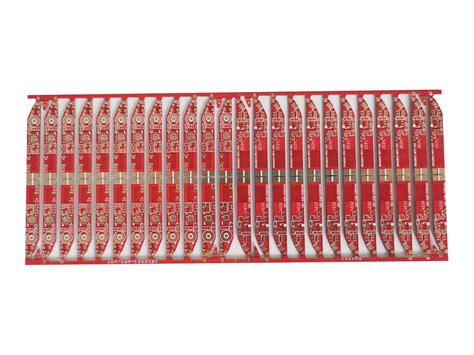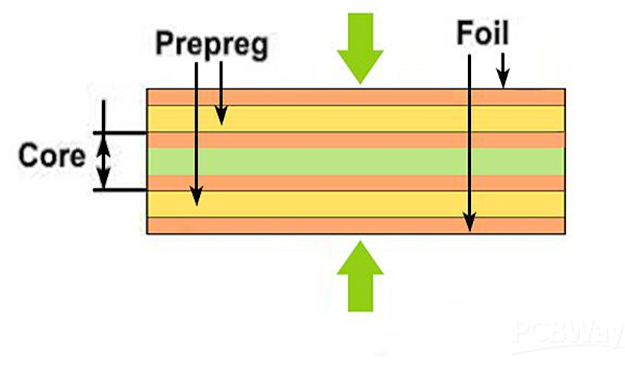Mastering BGA PCB Assembly: Techniques for Optimal Performance
Key Takeaways
In the realm of BGA PCB assembly, several crucial aspects play a vital role in achieving optimal performance and reliability. Understanding the fundamentals of pcba involves recognizing that BGA (Ball Grid Array) technology is pivotal for modern electronic designs due to its ability to accommodate higher pin densities and provide improved electrical performance. Key techniques such as meticulous placement, accurate soldering, and effective thermal management can significantly enhance the assembly processes. Moreover, addressing common challenges—such as bridging, voiding, and thermal issues—through innovative solutions is essential for maintaining quality standards in pcb assembly projects. Employing best practices, such as implementing strict quality control measures during each assembly phase and utilizing advanced inspection technologies, further ensures that the final product meets desired specifications. Staying updated with emerging trends and technologies is equally important for professionals in the field to refine their processes and methodologies continuously. In summary, mastering the intricacies of BGA PCB assembly requires a combination of foundational knowledge, practical skills, and an ongoing commitment to innovative practices in the ever-evolving landscape of electronic manufacturing.
Understanding BGA PCB Assembly: Fundamentals and Importance
BGA PCB assembly, or Ball Grid Array PCB assembly, is a critical process in modern electronics manufacturing. This technique involves placing components with a grid of solder balls on the surface of the PCB (Printed Circuit Board), allowing for a more compact and efficient design. The importance of mastering this technique cannot be overstated. The complex nature of BGA assemblies supports high-density packages, which are essential for achieving optimal performance in today’s miniaturized devices. Proper understanding of the fundamentals of pcba, or PCB assembly, is vital as it impacts both the reliability and the functionality of electronic devices.
One key benefit of BGA is its superior performance in thermal and electrical conductivity compared to traditional packages. This results in better device reliability under varying operating conditions. However, the challenges associated with the assembly process should not be overlooked, such as solder joint integrity and alignment issues during placement.
“A firm grasp on the fundamentals leads to refined execution.”
By familiarizing oneself with best practices in BGA pcb assembly, individuals can mitigate risks associated with manufacturing defects while enhancing overall product quality. This understanding lays a strong foundation for further exploration into advanced techniques and quality control measures that can significantly improve BGA performance and longevity in diverse applications.
Essential Techniques for Effective BGA PCB Assembly
In the realm of BGA PCB assembly, mastering the nuances of the process is critical for ensuring optimal performance and reliability. One essential technique involves maintaining precise temperature control during the reflow soldering process, which is vital for achieving strong solder joints. Effective pcb assembly requires careful consideration of board layout and component placement; ensuring that BGAs are correctly aligned with the pads can significantly reduce defects. Additionally, employing automated optical inspection (AOI) helps identify irregularities in solder joints early in the process, allowing for timely corrections.
Another key aspect is the selection of appropriate pcba materials; using high-quality substrates and solder pastes can greatly impact the longevity and functionality of electronic devices. Implementing proper handling procedures post-assembly is equally important, as BGAs are susceptible to mechanical stress.
Below is a summary table illustrating some critical techniques to enhance BGA PCB assembly effectiveness:
| Technique | Description |
|---|---|
| Temperature Control | Essential for optimal solder joint formation |
| Board Layout & Component Placement | Ensures proper alignment and reduces defects |
| Automated Optical Inspection (AOI) | Early detection of irregularities in solder joints |
| Material Selection | High-quality substrates enhance performance |
| Post-Assembly Handling | Mitigates risks associated with mechanical stress |
By adhering to these key techniques in BGA PCB assembly, manufacturers can enhance both performance and reliability, ultimately supporting more robust electronic systems.
Common Challenges in BGA PCB Assembly and Their Solutions
In the realm of BGA PCB assembly, several challenges can arise, potentially jeopardizing the efficiency and reliability of the final product. One significant challenge is the alignment of the BGA components during assembly. Given their dense configuration, precise positioning is critical; even a slight misalignment can lead to poor electrical connections. To address this, employing advanced pick-and-place machines equipped with vision systems can enhance accuracy in component placement. Another issue frequently encountered is thermal management during soldering. The PCB assembly process often requires specific temperature profiles to ensure proper solder joint formation. The implementation of reflow ovens with programmable settings allows for optimal thermal control, thereby reducing the risk of cold solder joints or component damage.
Furthermore, inspection after assembly is vital to flag potential defects early. Utilizing automated optical inspection (AOI) systems can significantly improve defect detection rates compared to manual methods. These systems can quickly identify issues such as insufficient solder or misaligned parts, ensuring each PCBA upholds high standards of quality and reliability. Lastly, designing for manufacturability (DFM) from the outset can mitigate many challenges associated with BGA assemblies. Incorporating design considerations tailored for efficient assembly processes not only simplifies production but also enhances overall performance and longevity.
By acknowledging these challenges and implementing effective solutions, manufacturers can optimize their BGA PCB assembly processes and achieve superior performance in their electronic products.
Best Practices for Ensuring Reliability in BGA PCBs
When it comes to BGA PCB assembly, establishing a reliable manufacturing process is crucial. One of the most effective strategies is to utilize high-quality materials and components, which directly influence the overall performance of the PCBA. Moreover, employing proper thermal management techniques, such as using thermal vias and advanced cooling solutions, can enhance the longevity and functionality of BGA pads. Another vital practice involves meticulous solder paste application; using an appropriate stencil design ensures uniform solder distribution, which leads to optimal connections. Furthermore, maintaining precise alignment during assembly is key; utilizing advanced placement systems will minimize the risk of misalignment, enhancing the reliability of each solder joint. Regular inspections and implementing automated optical inspection (AOI) systems can also help in identifying defects early in the process. By adhering to these best practices, manufacturers can significantly improve the durability and reliability of their BGA PCBs, ultimately resulting in high-performance electronic devices.
Innovative Tools and Technologies for Enhanced BGA Assembly
The landscape of BGA PCB assembly (Ball Grid Array Printed Circuit Board Assembly) is evolving, bolstered by the emergence of new tools and technologies that significantly improve the efficiency and effectiveness of pcba processes. One notable advancement is in the realm of soldering techniques. Advanced reflow ovens, equipped with precise temperature control, ensure that solder balls melt uniformly, which is critical for achieving strong connections without damaging sensitive components. Furthermore, the incorporation of automated optical inspection (AOI) systems allows for real-time monitoring during assembly. These systems utilize high-resolution cameras to detect misalignments or defects in pcb assembly, facilitating immediate rectifications that enhance final product reliability. Additionally, employing sophisticated software solutions for design layout can optimize the placement of BGA components, effectively minimizing potential issues related to thermal expansion and contraction during operation. With the continuous advancements in pcba tools—from selective soldering machines to advanced cleaning technologies—manufacturers can ensure enhanced precision, quality, and performance, thereby addressing common challenges that arise in BGA assembly processes. Embracing these innovative technologies not only leads to improved production outcomes but also ensures a superior end product capable of meeting the stringent demands of modern electronic applications.
Quality Control Measures in BGA PCB Assembly
In the realm of BGA PCB assembly, implementing robust quality control measures is paramount to ensure the reliability and performance of the final product. Quality control involves systematic monitoring and evaluation at various stages of the pcba process to identify defects early and mitigate potential failures. One effective approach is employing automated optical inspection (AOI) technologies, which enhance precision by detecting solder joint integrity and component placement deviations that may not be visible to the naked eye. Furthermore, implementing rigorous testing protocols, such as X-ray inspection, allows for detailed analysis of hidden solder balls beneath the BGA package, ensuring that electrical connections are intact. Consistent and thorough tracking of process parameters—like temperature profiles during soldering—is also essential in maintaining quality standards throughout the assembly process. By embracing these comprehensive quality control measures, manufacturers can significantly reduce yield loss and enhance customer satisfaction in their pcb assembly operations, paving the way for long-term success in a competitive marketplace.
Future Trends in BGA PCB Assembly Techniques
As technology continues to evolve, the landscape of BGA PCB assembly is witnessing several emerging trends that are set to enhance the efficacy and precision of pcb assembly processes. One notable advancement is the integration of smart automation in assembly lines, allowing for higher efficiency and reduced human error during pcba production. This automation employs sophisticated algorithms and machine learning to optimize placement accuracy, which is crucial for Ball Grid Array components prone to misalignment. Additionally, the rise of miniaturization in electronic devices is pushing the envelope on BGA packages, making effective heat management more critical than ever. This trend leads to innovative thermal management solutions being developed, such as advanced thermal interface materials that ensure reliability during operation.
Moreover, the collaboration between engineers and manufacturers is increasingly important as techniques such as predictive maintenance become more mainstream. Employing data analytics to forecast potential failures means that manufacturers can take preventative measures before issues arise, thus enhancing overall assembly quality. Furthermore, with a growing focus on sustainability, eco-friendly materials and processes are becoming vital components in future BGA PCB assembly strategies. By exploring these trends, companies can remain competitive and continue producing reliable circuit boards that meet the rigorous demands of today’s technology-driven market.
Conclusion
In summary, mastering BGA PCB assembly is crucial for achieving optimal performance and reliability in electronic devices. By focusing on essential techniques, such as precise placement and effective soldering methods, engineers can significantly enhance the overall quality of pcba processes. Furthermore, understanding the common challenges faced during pcb assembly—including thermal management and potential placement errors—allows for the development of strategic solutions that streamline production. The incorporation of innovative tools and technologies currently transforming the landscape is vital; these advancements not only improve assembly efficiency but also ensure a higher standard of performance. As the industry continues to evolve, fostering a commitment to quality control measures is essential in addressing the complexity inherent in BGA technology. Ultimately, staying informed about future trends will enable companies to maintain a competitive edge and continue delivering reliable electronic solutions in an ever-demanding market.
FAQs
What is BGA PCB assembly?
BGA PCB assembly refers to the process of mounting Ball Grid Array (BGA) components onto a printed circuit board (PCB) for the purpose of creating functional electronic devices. This method is popular due to the high density of connections it allows and its effectiveness in heat dissipation.
What are the main advantages of using BGA in PCB assembly?
The primary advantages of using BGA in pcb assembly include improved electrical performance, reduced inductance, and optimized thermal performance. Additionally, the design allows for a higher pin count, which is essential for compact designs.
What challenges are common in BGA PCB assembly?
Common challenges include alignment issues during placement, soldering difficulties due to the hidden underside of components, and the potential for solder ball bridging. These issues can affect both performance and reliability.
How can I ensure quality and reliability in my BGA assemblies?
Implementing rigorous inspection processes like X-ray imaging, using appropriate solder materials, and ensuring accurate placement are critical steps to ensure quality and reliability in BGA PCBA. Regular maintenance of equipment is also essential.
What innovative technologies are transforming BGA PCB assembly?
Technologies such as advanced soldering techniques, automation through robotic systems, and improved inspection technologies like automated optical inspection (AOI) are significantly enhancing BGA assemblies. These innovations improve both efficiency and accuracy.






